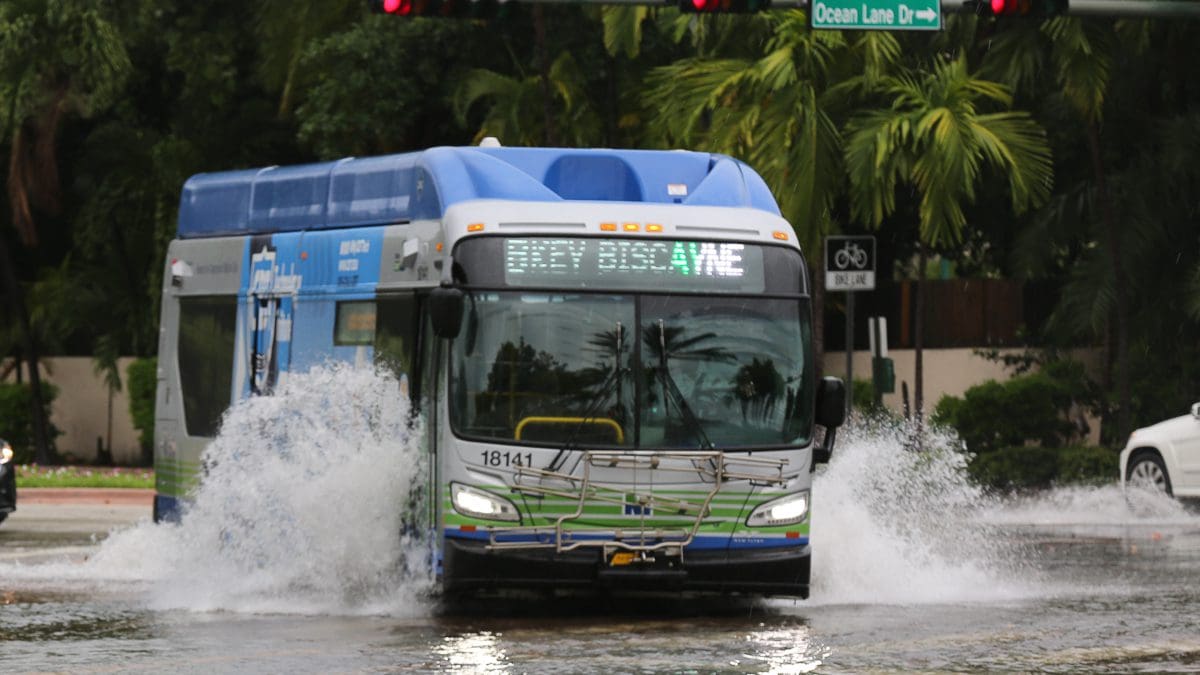Miami-Dade County’s bus system is getting a major overhaul in the form of the Better Bus Network. Key Biscayne won’t see much of a change to routes revised a few months ago.
The initiative to redesign the county’s bus network started as a grassroots effort from the nonprofit advocacy group Transit Alliance in 2018. After five years of lobbying and design work, Miami-Dade County got on board, and the Better Bus Network is set to launch countywide on Monday.
The network aims to streamline the bus system map by eliminating certain bus stops along high-traffic routes, discontinuing some lines with low ridership and adding more buses. The goal is to create “high-frequency service,” with buses coming every ten to 15 minutes throughout the day on weekdays and weekends.
Miami-Dade County Commissioner Eileen Higgins, a sponsor of the plan, said transit riders, including herself, have long lamented slow and unreliable service from the county’s metrobuses.
“I’m a bus rider, so I personally complain about infrequent bus service,” Higgins told WLRN. “Particularly on Saturdays and Sundays, sometimes we’ll have service coming every 30 minutes or once an hour. That’s really hard. We had the opportunity with the Better Bus Network to look at how we become more efficient.”
On Key Biscayne and Crandon Boulevard, changes already were announced during the summer by Miami-Dade County Mayor Daniella Levine Cava. Route B — which services the island — was renamed Route 26. Frequency of buses under the plan implemented in July cut the wait time from 60 to 30 minutes midday on Crandon Boulevard.
The most important impact was that the route down Harbor Drive was discontinued, causing those who rely on it to make arrangements either through Freebee or alternative transportation to get to Crandon Boulevard to catch the bus.
About 2,200 people ride the Key Biscayne bus on an average weekday, County statistics show. Many are employees commuting to and from work on the island. And ridership has been increasing — up 63% in March when compared to ridership a year ago.
The plan will bring many changes to existing routes. More than 30 lines have been discontinued, according to a county transit guide. Lines like the 297 that went from Miami International Airport to Miami Gardens, which Miami Springs resident Robert Olson used to get to school.
“The 297 no longer exists, and my typical commute to Miami-Dade North Campus is gone now. Now it’ll take me an extra metro ride, which could add 15 to 30 minutes to my commute depending on if I get lucky,” Olson told WLRN.

Olson is a lifelong transit rider whose family relies on the bus system, as they can’t afford to own a car. He’s worried that the changes from the Better Bus Network will be confusing for his mother, and cause more physical strain for her as some of her bus stops will no longer be in service.
“I’m still young and I can be patient and do what needs to be done. I’m mostly worried about my mom,” he said. “She doesn’t know much about technology to check the new routes, and she can’t really walk that far, especially if she has groceries.”
Higgins said that while some lines have been discontinued in favor of faster service, some have been renamed or switched out for other routes. The J bus, for instance, will now be serviced by the 36 bus, which runs along NW 36th Street.
In parts of West, South and North Miami-Dade County, some bus routes have been removed in favor of a free on-demand rider service called “MetroConnect.” Riders who download the MetroConnect app can request a ride within certain service zones to get to other transit stations.
“So if download the app free, you can preorder a ride from, let’s say, your home to anywhere in the service area or to a more convenient transit stop. That means we don’t have to run a fixed bus once an hour there,” Higgins explained.
The MetroConnect service does not operate on weekends except in the Westchester and Dadeland North and Dadeland South service areas, according to the schedule on the county’s website.
For elderly riders or non-English speakers who may have trouble navigating the county’s transit website, Higgins said they may call 311, the county’s information line, to find out where they need to go and what lines to take.
The county also plans to have transit employees and volunteers at major bus stops for the first week of the network launch. These people will pass out informational material in English, Spanish and Creole and give riders directions.
“The first week is it’s going to be stressful,” Higgins concedes. “I’m expecting that we’re going to have half the people really fully prepared. I’m also expecting we are going to have some people that are going to need help.”
Bus fares will be free from Nov. 13 through the end of the year, even though the free fare plan was apparently not approved in the county’s budget before it was announced.
Despite the controversy — which led to the suspension of the county’s transit director — the county believes the complimentary bus rides will encourage more people to try and adapt to the revamped system under the Better Bus Network.
To plan your transit trip after Nov. 13 in advance, visit Miamidade.gov/Betterbus.
Key Biscayne Independent staff contributed to this story.

Joshua Ceballos
Joshua Ceballos is WLRN's Local Government Accountability Reporter and a member of the investigative team. His work appears under a partnership between WLRN and the Key Biscayne Independent.


